© 2025 MJH Life Sciences™ , Patient Care Online – Primary Care News and Clinical Resources. All rights reserved.
Obesity Briefs from the AACE Annual Scientific & Clinical Congress
Highlights include: POC A1c testing in prediabetes screening, first-year weight loss after bariatric surgery, and predicting fracture risk in obese patients.

We present 3 abstracts from the 2018 AACE Annual Scientific and Clinical Congress in Boston, Massachusetts that focus on obesity with the first study showing that point of care A1c testing is useful for identifying patients with prediabetes and undiagnosed diabetes in the setting of a weight loss clinic. The second study found that first-year weight loss after bariatric surgery was most important in predicting better A1c at 5 years. Findings of the third study suggest that the ratio of lumbar bone mineral density to BMI may predict fracture risk better than BMD alone in obese patients. Click through through the slides for details on the 3 studies and for clinical take home points.
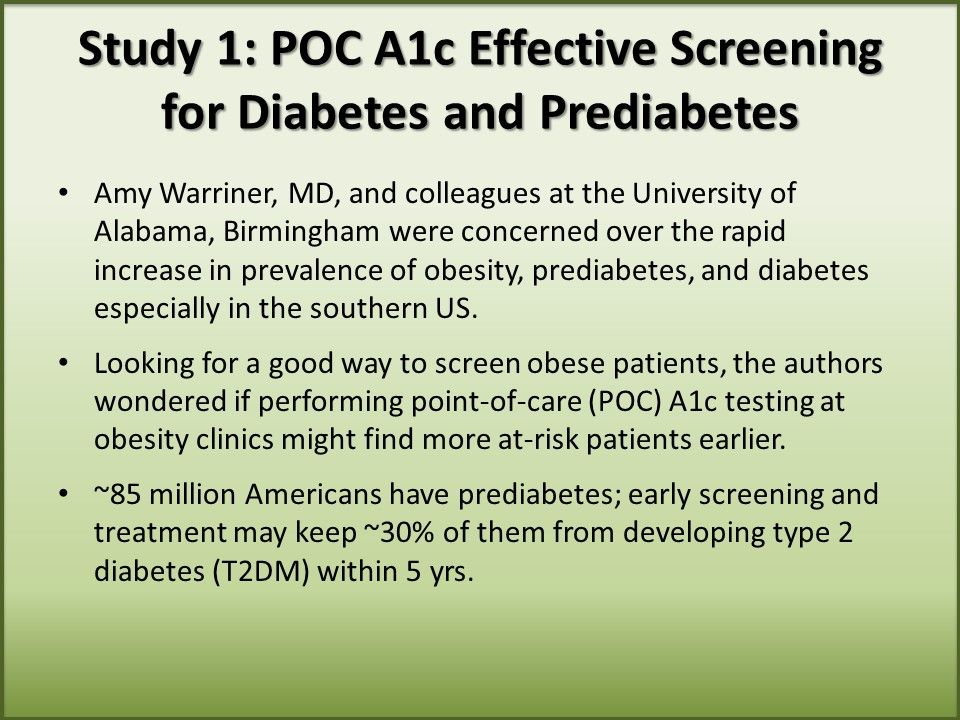
Study 1: POC A1c Effective Screening for Diabetes and Prediabetes. With around 85 million Americans with prediabetes, early screening and treatment is important to keep as many as 30% of them from developing T2DM within 5 years. That is why Amy Warriner, MD, and colleagues at the University of Alabama, Birmingham set out to determine if performing POC A1c testing at obesity clinics could find more at-risk patients earlier.
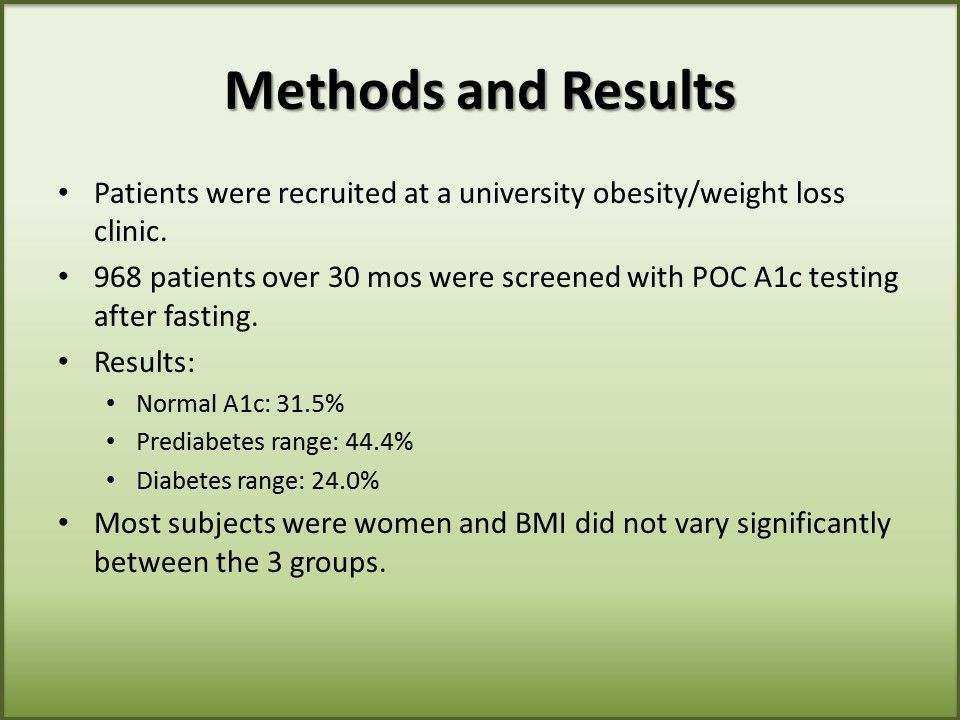
Methods and Results. Warriner and colleagues screened 968 patients over a 30-month period with POC A1c testing after fasting and found that 31.5% of subjects had normal A1c values, 44.4% had values in the prediabetes range, and 24.0% had values in the diabetes range.
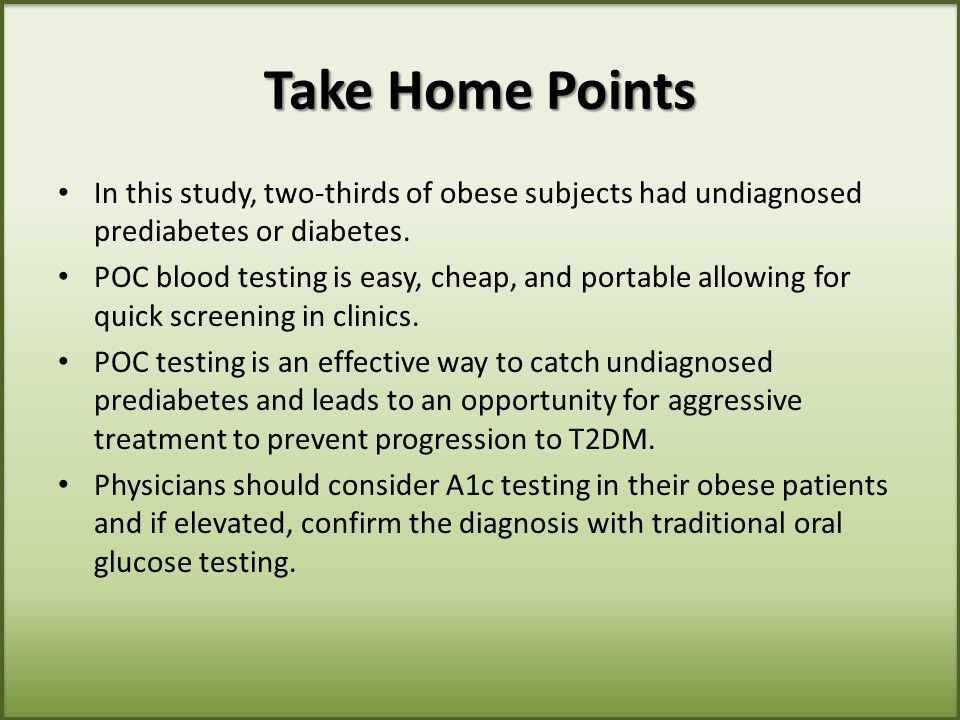
Take Home Points. In this study, two-thirds of obese subjects had undiagnosed prediabetes or diabetes. Physicians should consider A1c testing in their obese patients and strongly encourage patients to lose weight and control their blood sugar through dietary modification to prevent progression to T2DM.
For more information: Warriner A, Dixon A, Martirossian A. Identifying undiagnosed prediabetes and diabetes in patients with obesity. Poster presented at: AACE Annual Scientific and Clinical Congress; May 2018; Boston, MA.
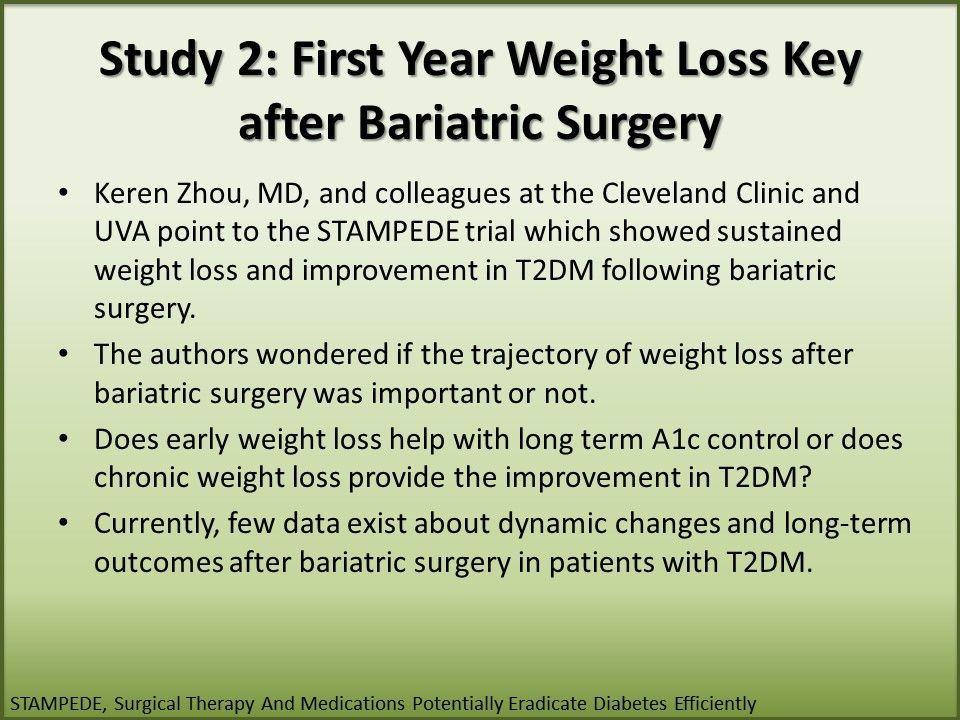
Study 2: First Year Weight Loss Key after Bariatric Surgery. Karen Zhoum, MD, and colleagues at the Cleveland Clinic and UVA analyzed the STAMPEDE trial, which showed sustained weight loss and improvement in T2DM bariatric surgery. They sought to determine if early weight loss could help with long term A1c control or if chronic weight loss provides the improvement in T2DM.
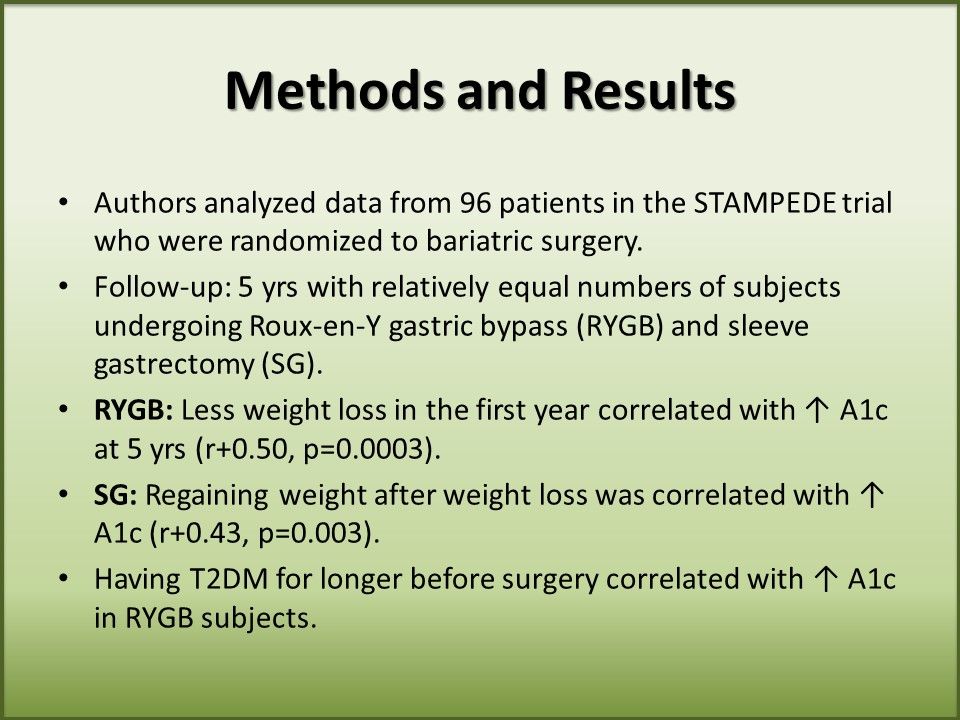
Methods and Results. Authors analyzed data from 96 patients in STAMPEDE trial who were randomized to bariatric surgery. They found that having T2DM for a longer period of time before surgery correlated with higher A1c in RYGB subjects.

Take Home Points. This work suggests there is a window for optimal intervention in the first year after bariatric surgery during which physicians can help make a long term impact in dibaetes patients.
For more information: Zhou K, Wolski K, Aminian A, et al. Weight loss trajectory following randomization to bariatric surgery on long-term diabetes outcomes. Poster presented at: AACE Annual Scientific and Clinical Congress; May 2018; Boston, MA.
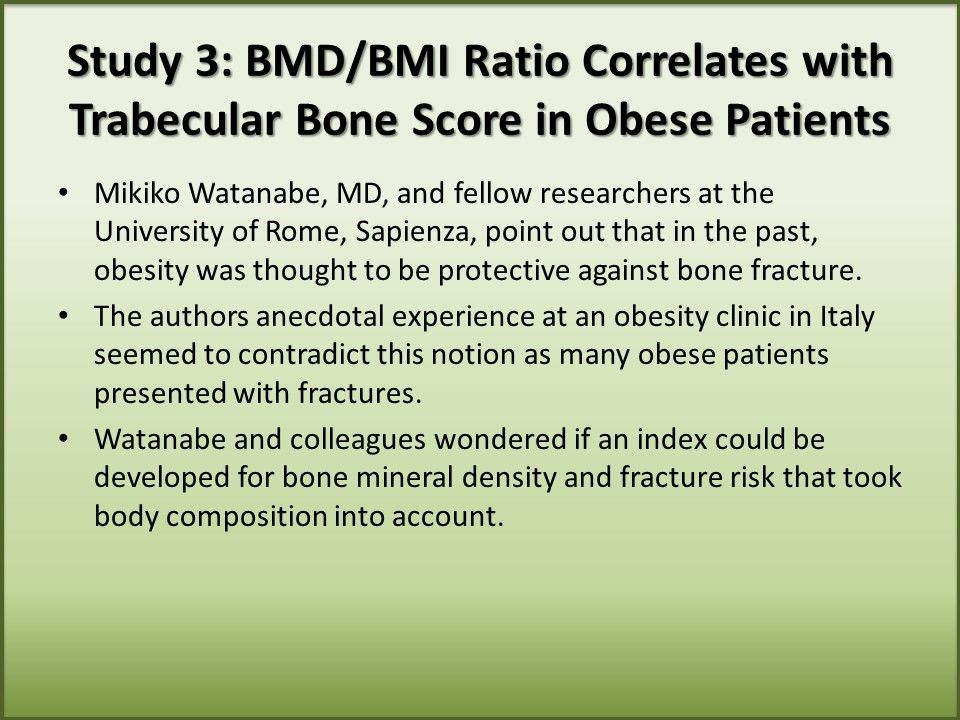
Study 3: BMD/BMI Ratio Correlates with Trabecular Bone Score in Obese Patients. Mikiko Watanabe, MD, and fellow researchers at the University of Rome, Sapienza sought to determine if an index could be developed for bone mineral density and fracture risk in obese patients that takes body composition into account.
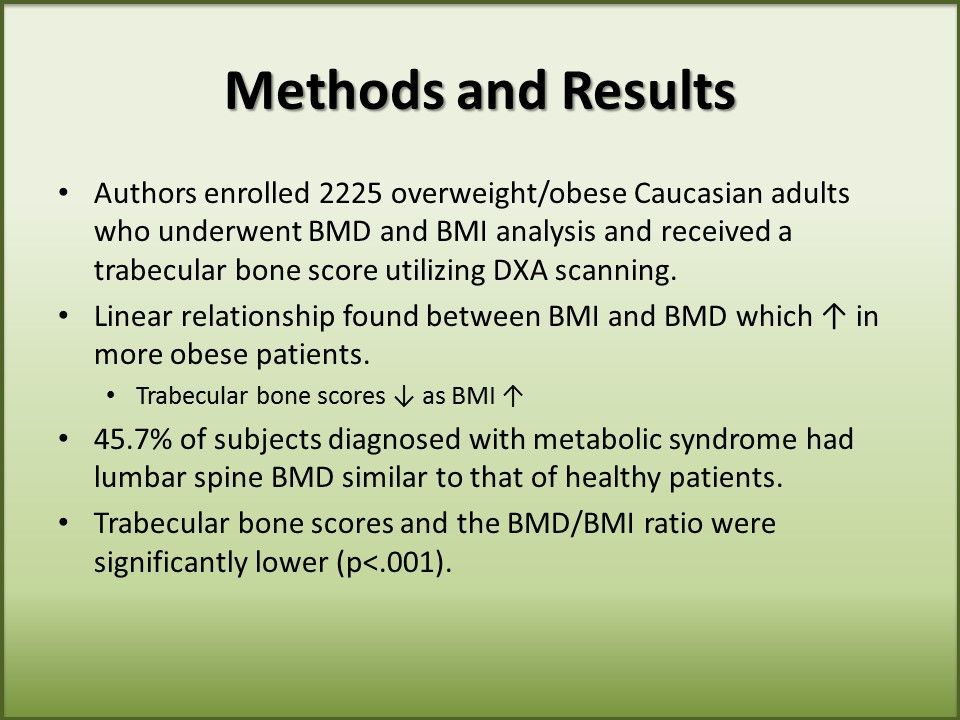
Methods and Results. Authors enrolled 2225 overweight/obese white adults who underwent BMD and BMI analysis and received a trabecular bone score using DXA scanning. A linear relationship was found between BMI and BMD, which was increased in obese patients and trabecular bone scores decreased as BMI increased.
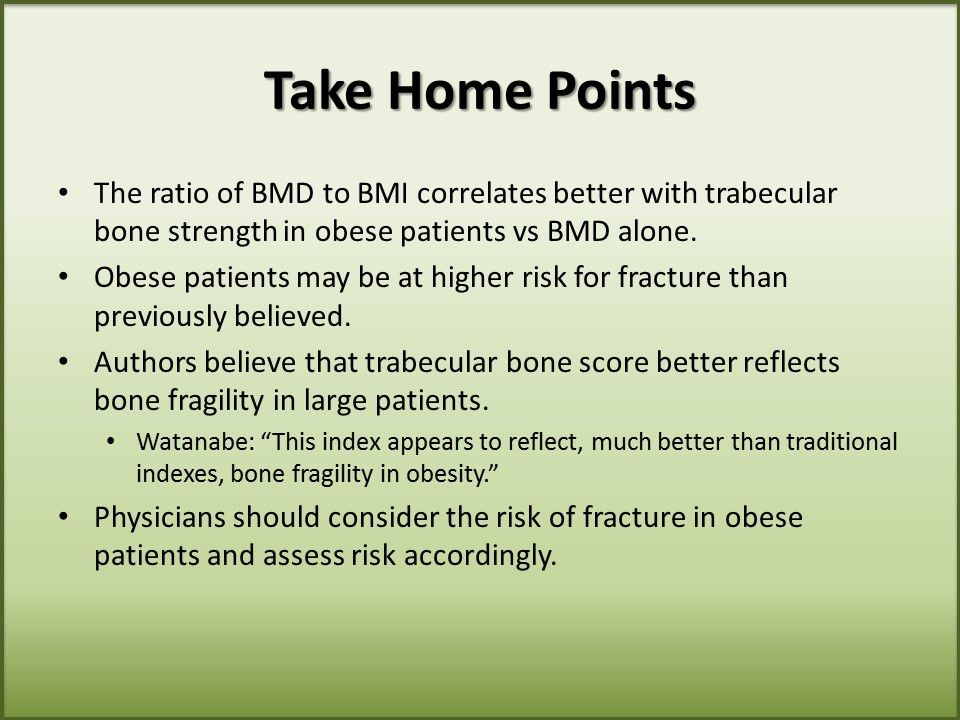
Take Home Points. The ratio of BMD and BMI correlates better with trabecular bone strength in obese patients vs BMD alone and obese patients may be at a higher risk for fracture than previously thought. Authors also noted that trabecular bone score better reflects bone fragility in large patients and physicians should consider the risk of fracture in obese patients and asses accordingly.
For more information: Watanabe M, Costantini D, Tozzi R, et al. BMD/BMI ratio and trabecular bone score: New potential tools to assess the risk of fracture in obese patients. Poster presented at: AACE Annual Scientific and Clinical Congress; May 2018; Boston, MA.



